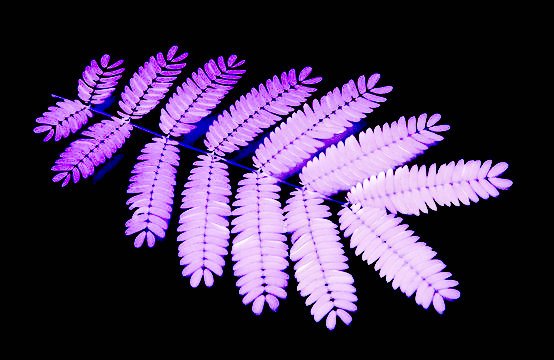The Psychoactive Bough
Virgil’s hero Aeneas must go visit his dad in the underworld, but how to get there without dying? “It’s easy to go to hell,” the witch Sybil tells him (truer words were never spoken). “The door is open night and day: / but to retrace your steps, and go out to the air above, / that is work, that is the task.” In order to go to hell and back again, Aeneas must find the golden bough (Yes, that golden bough), a kind of mistletoe vine, “golden in leaves and pliant stem,” a bough sacred to Persephone, infernal queen of the underworld. The sybil says this bough is “freely, easily” given to those whom fate allows, but when Aeneas later finds the tree there is hesitation—cunctantem in the Latin—a reluctance that is of the plant, not the man; Fagles translates: “the bough holds back.”
The difference in the text between “freely” and “reluctant” has created something of a controversy in the long readership of the Aenead; was Virgil careless on this point? Even if Virgil were a careless hack, the reluctance of the golden bough is fairly rich in literary significance. The conflict between the human description of the plant as “freely given” and the actual hesitation of the bough in Aeneas’s hand reads today as a kind of botanical realism; the golden bough is, weirdly enough, allowed to have agency. And why not? In this regard the golden bough episode can be read as an example of plant wisdom in the mode of Robin Wall Kimmerer. The golden bough is not just a talisman or key card for the realm of the dead, it is the agent of transport itself.
This reluctance or resistance in the plant, the plant that does not want to be picked, but that once taken offers free passage in the land of the dead, finds a contemporary analogy in those DMT diehards who begin the journey to the underworld by going out into their neighborhood and finding the sacred acacia plant, (a plant, BTW, that wills its own toxicity depending on what is eating its leaves) cutting its stems, peeling and harvesting the bark, cooking and rendering it, pulling out of this rendering the alkaloid (the base alkaloid of ayahuasca) that, once dried, rolled into a joint and smoked, will provide access to that netherealm known as DMT space, but that might otherwise be the underworld—for all we know. What we do know, gathered from numerous trip reports, is that this “space” is a vast subterranean realm of non-Euclidian architecture, inhabited by highly weird non-human entities with a wicked sense of humor. Pretty much like the other world found in Irish fairy lore, and likewise bearing a strong resemblance to the Bardo realm, that underworld mapped out—as if it were a lonely planet guide—in The Tibetan Book of the Dead, complete with terror and ecstasy, vast underground chambers and wrathful deities of living light. The triangulation of reports from contemporary psychedelia, Tibetan Buddhism, near death experiences and the katabasis of ancient Greek mystery cults make a rather compelling appeal for, at the very least, the development of a psychogeography of the underworld.
In any case, it is obvious—to this reader anyhow—that Virgil’s “golden bough” is a psychoactive bough, symbolic of botanical tryptamines and that Aeneas’s journey to the underworld may be read as the big psychedelic experience par excellence. Where (or if) the drug ends and the land of the dead begins is anyone’s guess, but the crazy wager I am attempting to make is that the underworld, known the world over, is all too real and yes, it is possible to go to there—and return—with the help of a plant, a common shrub.

